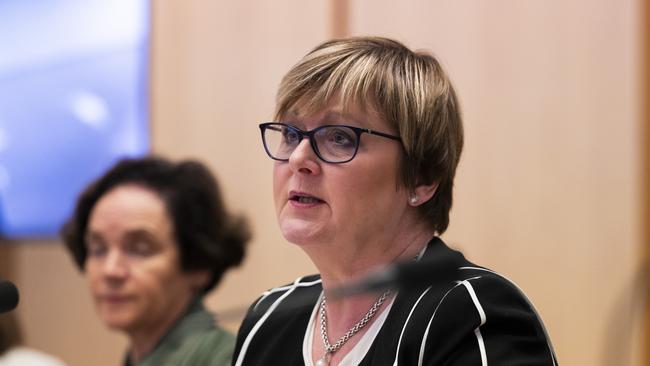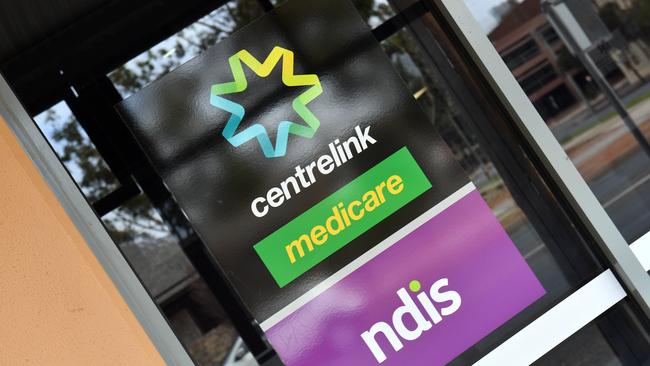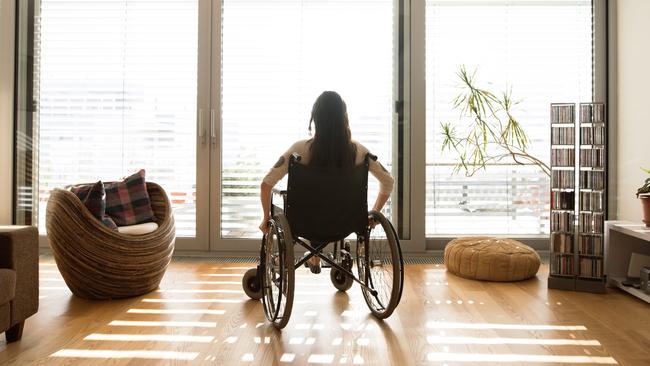Vikki Campion: Cruel NDIS ‘life hacks’ stealing support from disabled kids
Shameless TikTok influencers are stealing from the most vulnerable Australians by sharing ‘life hacks’ to exploit the NDIS, Vikki Campion writes.
Opinion
Don't miss out on the headlines from Opinion. Followed categories will be added to My News.
Social media influencers are exploiting welfare safety-nets by posting self-described tutorials on how to “life hack” schemes designed to help people with severe and permanent disabilities.
On TikTok, a woman who says she is autistic, boasts about how the National Disability Insurance Scheme (NDIS) paid for her new $367 Apple AirPods, horseriding, and private-art classes. Another dances to the camera and explains how the NDIS pays for her cleaner and gardener, while a third – now removed post – provided step-by-step tutorials on how to game the system with tips to exaggerate the severity of your condition.
“Some people think I am a dole bludger, I’m not, sometimes you can’t work, but yes … go get that bag everyone!” one creator says.
But criticising the NDIS in any way is a landmine.

The Minister responsible for the NDIS, Linda Reynolds, copped an enormous backlash for even just daring to suggest that people should be accountable for their support packages through an independent review process, even though the NDIS is on track to be
$8 billion more expensive than Medicare in three years.
In 2024-25, a system that supports under 500,000 Australians will be more costly than one that looks after 25.7 million people.
Some people on the NDIS do need a cleaner and someone to do the gardening, just as horse riding and art classes are genuine therapy for people with disabilities.

But deliberately lying about your mental health to get support you don’t need is against the interest of everyone who may one day need a sustainable NDIS themselves.
As NSW Senator Hollie Hughes says: “You never know when you will need the NDIS. You might be in a car crash and become a quadriplegic.”
Originally, the NDIS was created for people with severe and permanent disabilities, people who couldn’t dance on a lip-synching app or post a video back in response to a social media influencer bragging about rorting the system even if they wanted to.
It was also created for equity no matter where you lived, so a child in Tasmania should get the same services in North Queensland.

As the cost soars to $60 billion a year, we must remember the NDIS was originally intended for people whose needs were at risk of being forgotten in the swarms of new applicants seeking packages for neither severe nor permanent disabilities, who were originally intended to be guided to community pathways for assistance. Instead, it’s been nine years since the birth of the NDIS, and where it should be investing and building skills so the cost of long-term care is reduced, it’s done the opposite.
The total lifetime cost for the 466,619 existing NDIS participants has been estimated by the latest audit released in October to be $940.5 billion. Average annual payments within two years are projected to be $71,700 each for people with psychosocial disabilities aged 19 to 24.
There will be 670,400 participants in the scheme at the end of June 2025, with 94.5 per cent under the age of 65, significantly higher than estimated by the Productivity Commission in 2017, with total participant costs to grow to $41.4 billion in 2024-25.

Usually, elections bring division, but the behemoth of the NDIS requires both major parties to commit to where they intend to take it to make it sustainable into the long term and vow that when whoever wins, the other side doesn’t criticise them for that.
Participants are entering the scheme at a much higher rate than ever anticipated, and people without a permanent disability are not exiting as fast as anticipated, a recent audit found.
How can you take therapy and support from disabled children – the most vulnerable people in
society – and boast about it as a “life hack” to get followers in the sewers of social media?

The people who are most focused on the sustainability of the NDIS are those parents of children with disabilities, who will need it when they are no longer there for them, for whom caring for their child is a lifelong commitment.
It doesn’t go away when they turn a certain age or leave school. They are too aware that the pie is only so big. Cut into too many pieces; there will not be enough, especially as the cost soars. Recent reviews suggest that the NDIA should undertake “further detailed analysis better to understand the drivers of higher than expected new entrants,” and “strengthen its ability to detect fraud”.
On top of that, in broadening the goalposts away from what was severe, to include what was once known as mild intellectual impairment, the entire NDIS policy has shifted to be about early intervention predicated on children with milder autism but average intellect, leaving severely impaired children in mainstream care.
NDIS families know they are coping with a bureaucracy that believes children with a disability should be with their peers, to the point they want to remove choices and remove the rights of a child to experience highly specialised care.
In trying to become kinder, the NDIS faces failing the people who need it most.
Got a news tip? Email weekendtele@news.com.au





